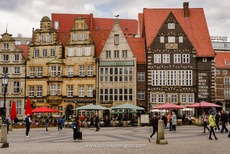It is not a secret that Keukenhof Gardens is one of the most beautiful places to visit in spring in The Netherlands. But there is so much that is not known about it, and I see a lot of misconceptions to drag attention every year. So here I want to share some of the things I learned after going every year in at least 30 different opportunities.
So, here are 15 questions that are worth answering about Keukenhof Gardens:
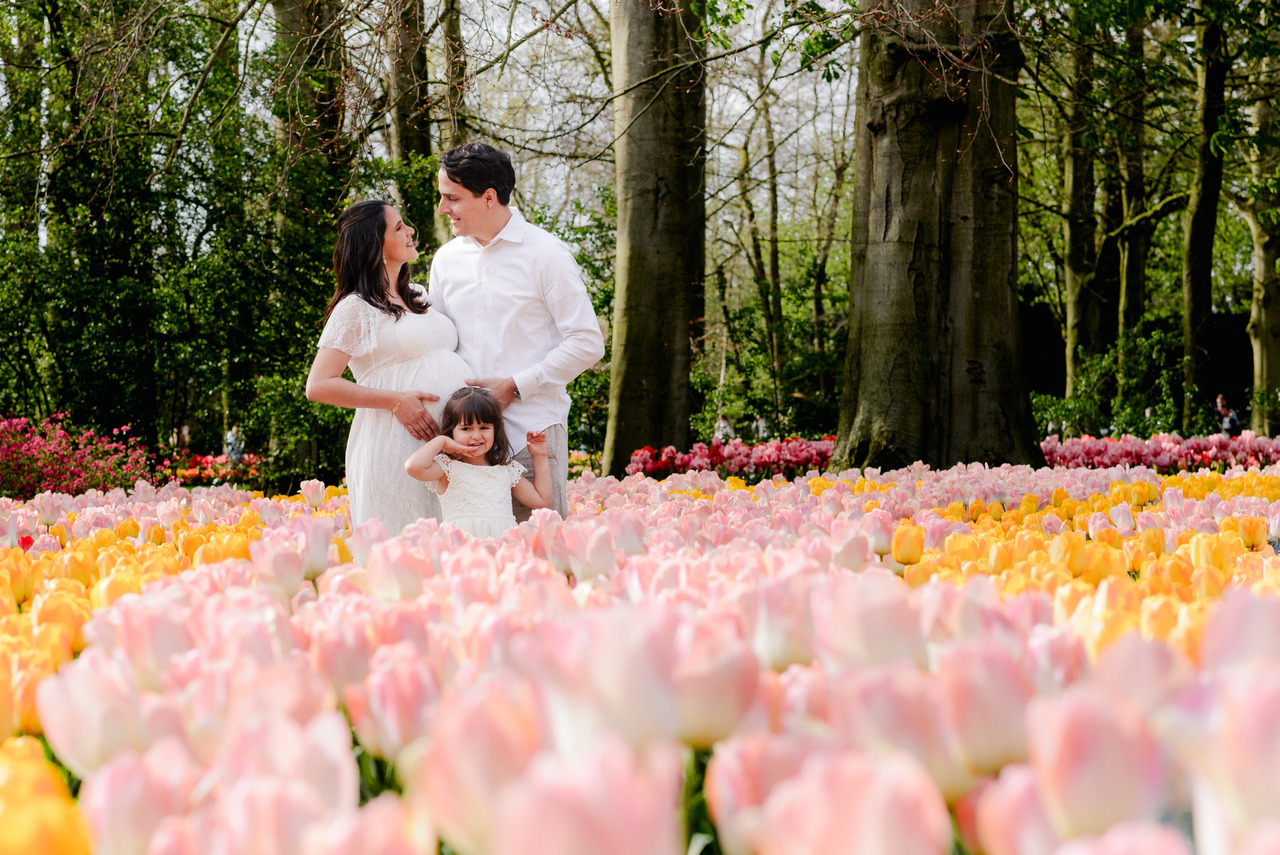
General Information
Question 1: What is Keukenhof?
Keukenhof is one of the world’s largest flower gardens, located in Lisse, Netherlands. The garden’s main goal is to serve as the largest showroom for local flower businesses, allowing visitors to explore beautifully curated floral displays. As you walk through, you’ll find the name of each company displayed alongside their flowers, often with QR codes that provide more information about the business and, in some cases, direct links to purchase bulbs.
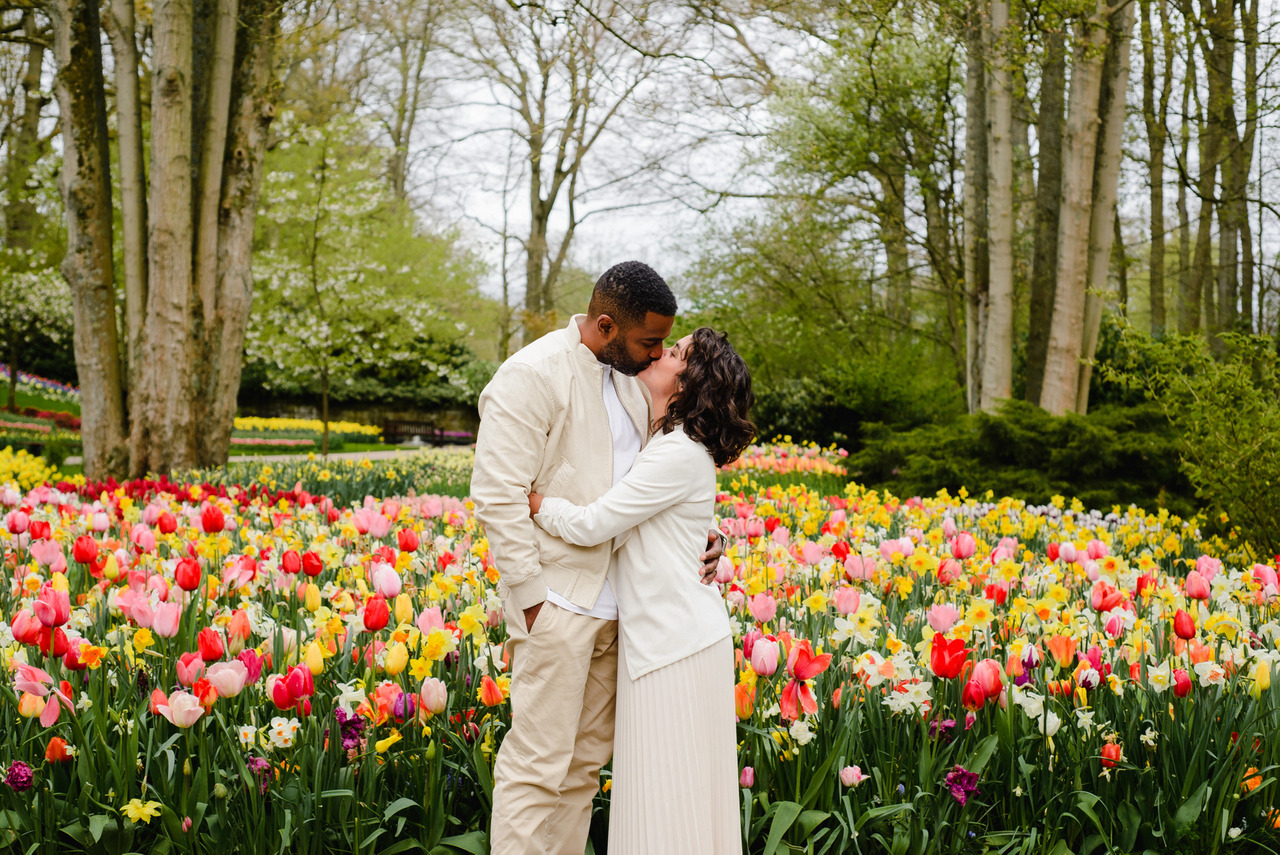
Each spring, Keukenhof blooms with over 7 million flowers, covering 32 hectares with a stunning variety of tulips, daffodils, hyacinths, and other spring flowers. Unlike the vast tulip fields of the Dutch countryside, Keukenhof is a landscaped garden filled with vibrant flower beds, cherry blossom trees, and a scenic lake surrounded by colorful blooms.
Keukenhof is open for a limited time each year, typically from mid-March to mid-May, when the flowers are at their peak. The garden attracts visitors from all over the world who come to admire its breathtaking floral designs, artistic arrangements, and the vibrant colors of spring.
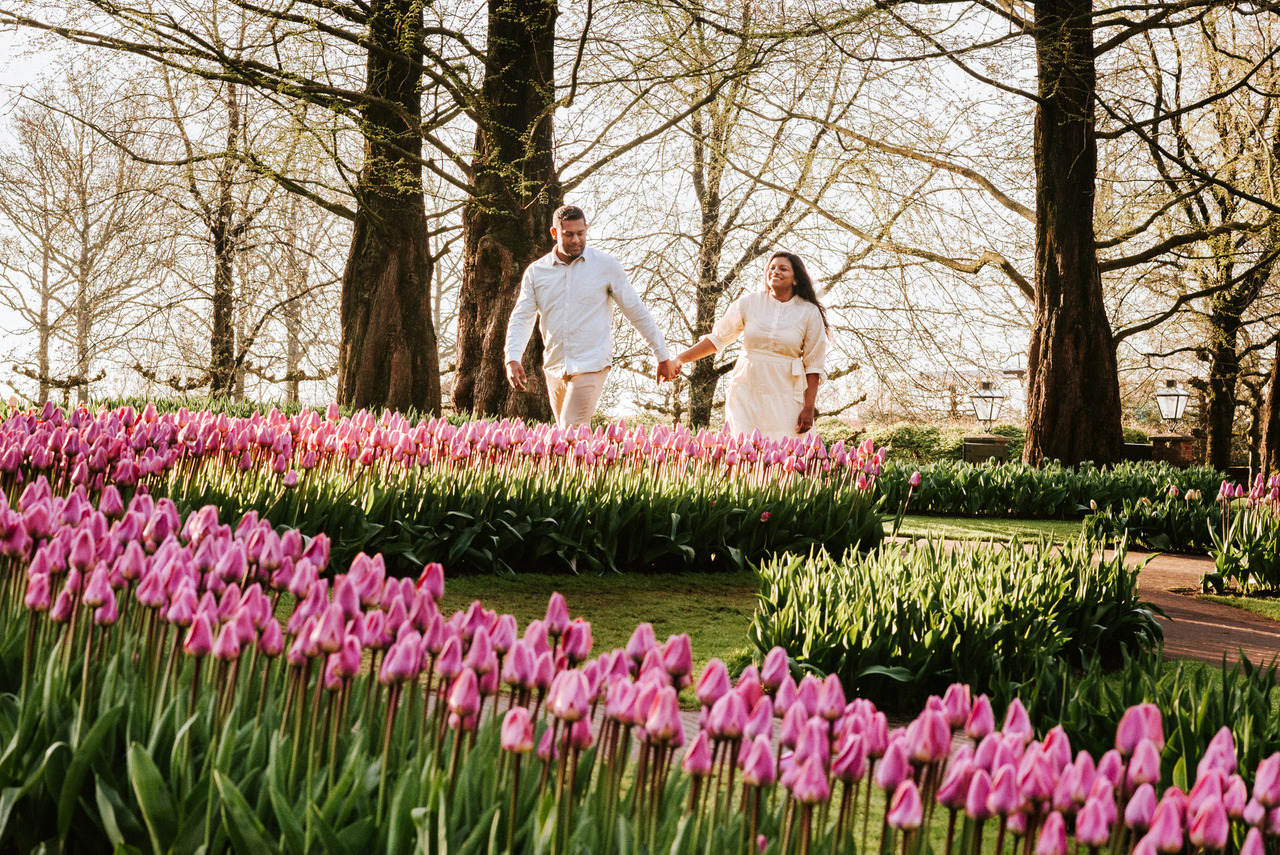
Question 2: Where is Keukenhof located?
Keukenhof is located in Lisse, a town in the province of South Holland, Netherlands. It is about 40 km southwest of Amsterdam and close to cities like Haarlem and Leiden. Many people assume Keukenhof is in Amsterdam, but Amsterdam belongs to the province of North Holland, while Keukenhof is in South Holland.
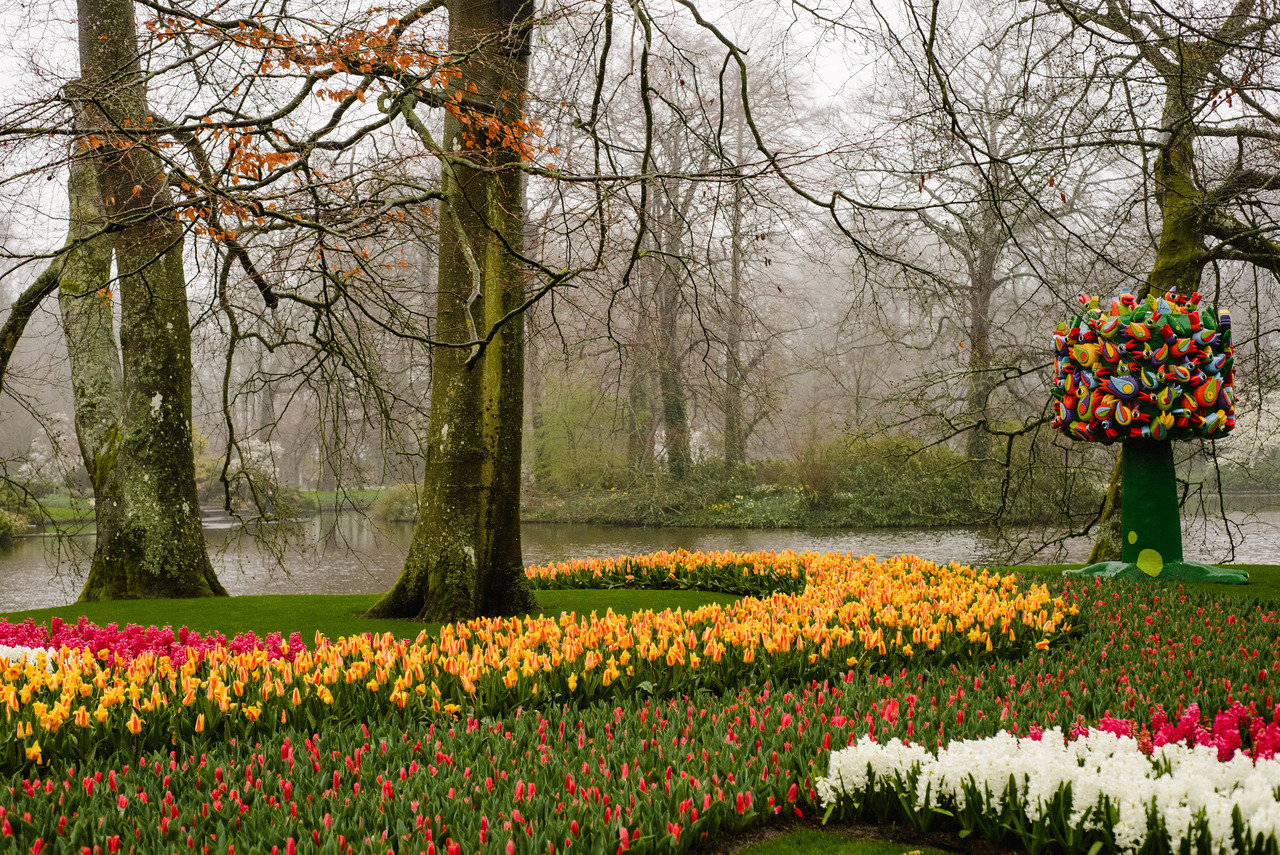
How to Get to Keukenhof
Keukenhof is not directly accessible by train, so the best way to reach it is by bus. The most convenient option is the Keukenhof Express buses arranged by the park itself. These are operated by Arriva and work with Keukenhof’s prepaid tickets, but you can also use them like a regular Dutch bus by tapping in and out.
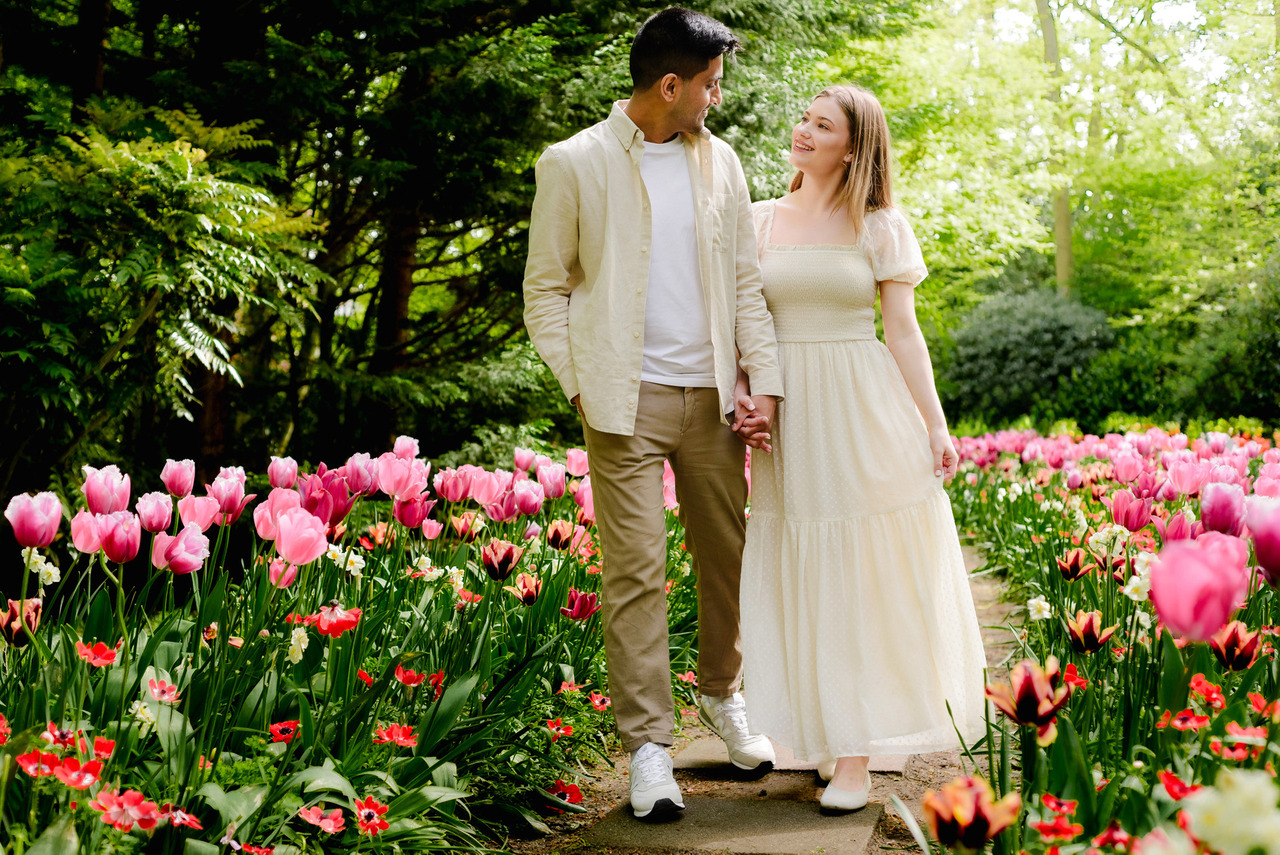
Another way to reach Keukenhof is by bike. A scenic cycling route starts from Hillegom Station, which you can reach from Amsterdam by taking a train to Haarlem and then transferring to a train towards Leiden. This route is especially beautiful in spring, as it passes by tulip fields.
At Hillegom Station, you’ll find rental bikes from Rent a Bike van Dam, which can be unlocked via their app. The best cycling route to Keukenhof includes two recommended stops: The Tulip Barn and Keukenhof Castle. This way, you’ll pass several tulip fields before reaching the gardens. Keep in mind Keukenhof has two entrances, and the cycling route is best to reach the back entrance, which is only open from 9 am, while the front door is open from 8 am.
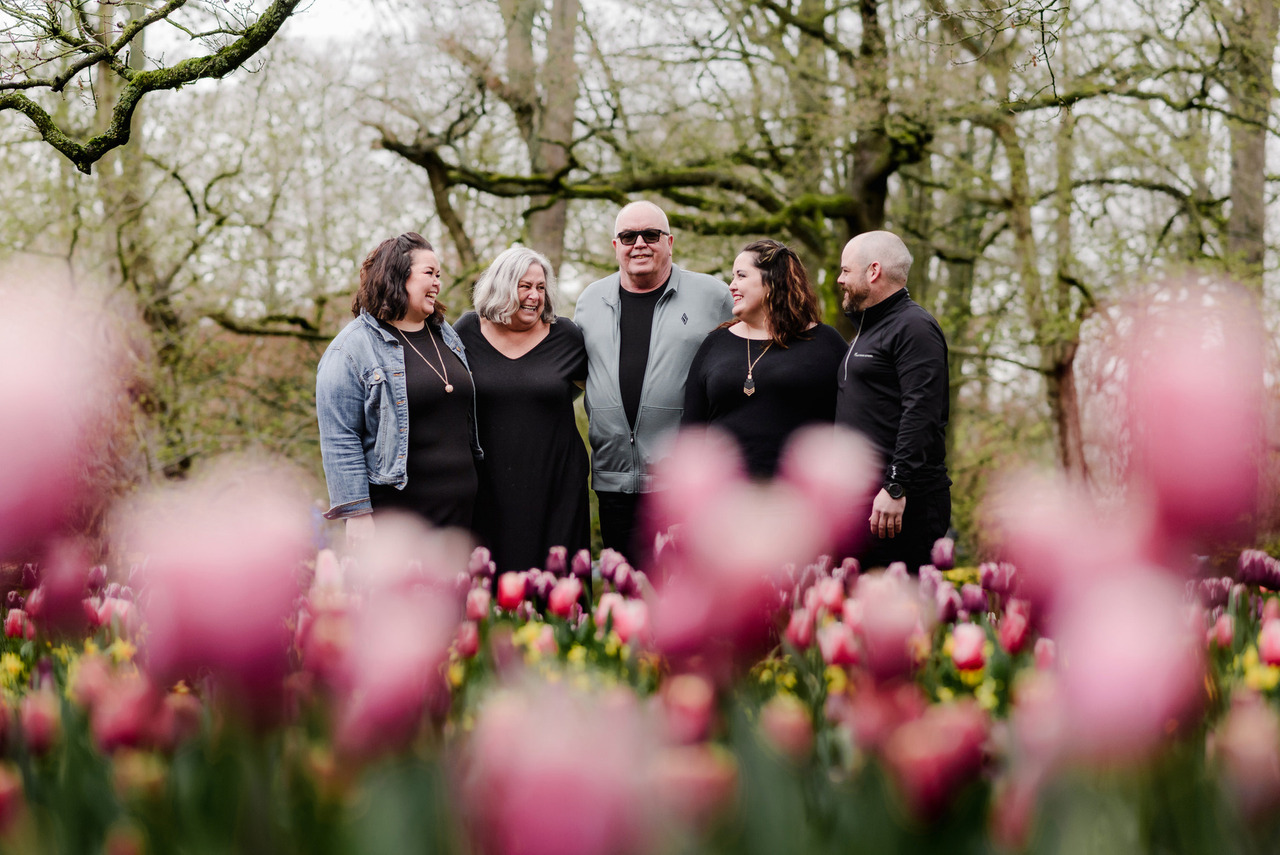
Question 3: When does Keukenhof open in 2025?
Keukenhof will be open in 2025 from March 20th to May 11th. The park operates daily from 8:00 AM to 7:00 PM.
From 6:00 PM, some exhibits and areas begin to close, allowing visitors time to walk toward the exit before closing.
For photography, the best times to visit are the first and last hours of the day. These times offer the best light and fewer crowds, making it easier to capture beautiful photos without people in the background.
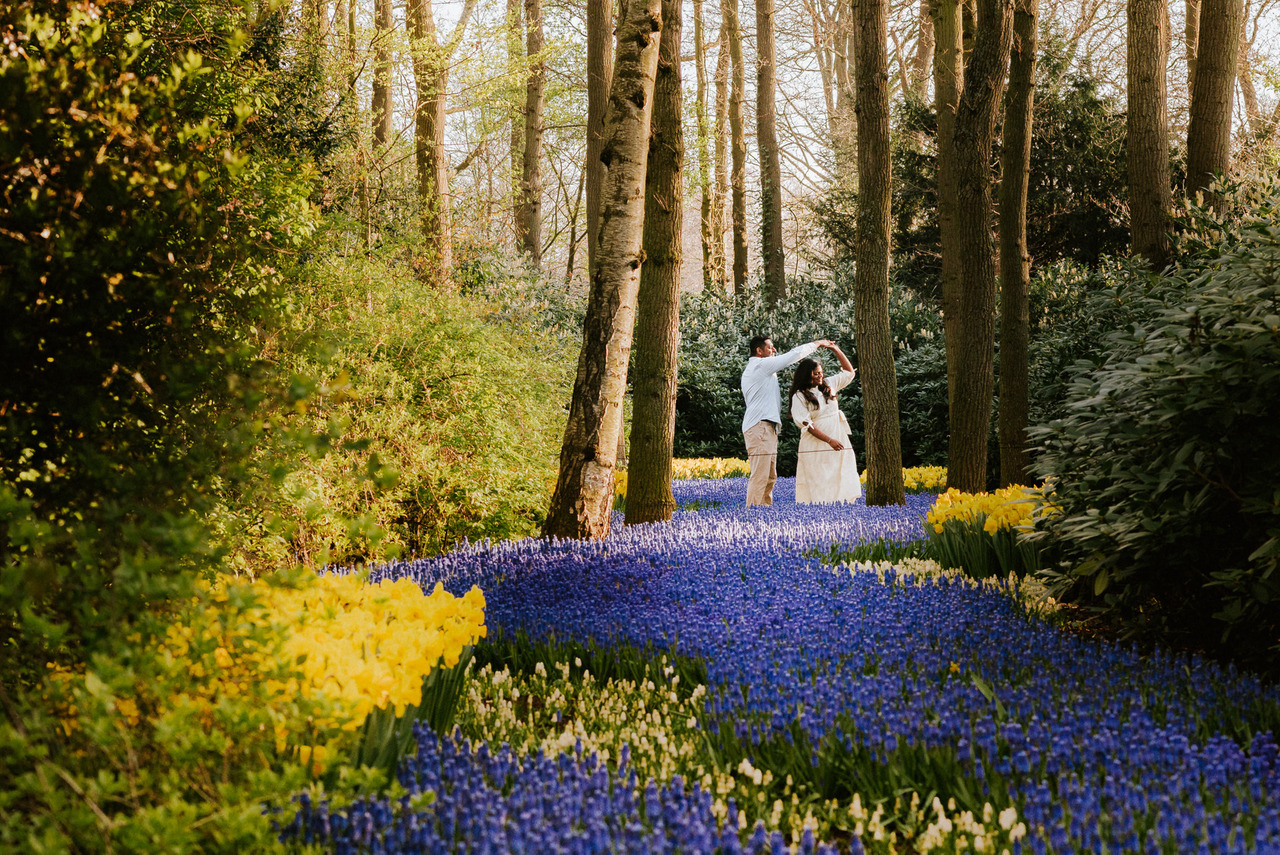
Question 4: How long should I plan to spend at Keukenhof?
On average, a visit to Keukenhof takes 3 to 4 hours. However, if you want to explore everything at a relaxed pace, you might need up to 5 hours.
Keukenhof is a massive garden, with multiple areas to explore. It is divided into seven pavilions:
- Irene, Juliana, Orange Nassau, Willem-Alexander, Beatrix, Wilhelmina, and the Windmill Pavilion.
- Each pavilion hosts different flower exhibitions, art displays, and activities throughout the season.
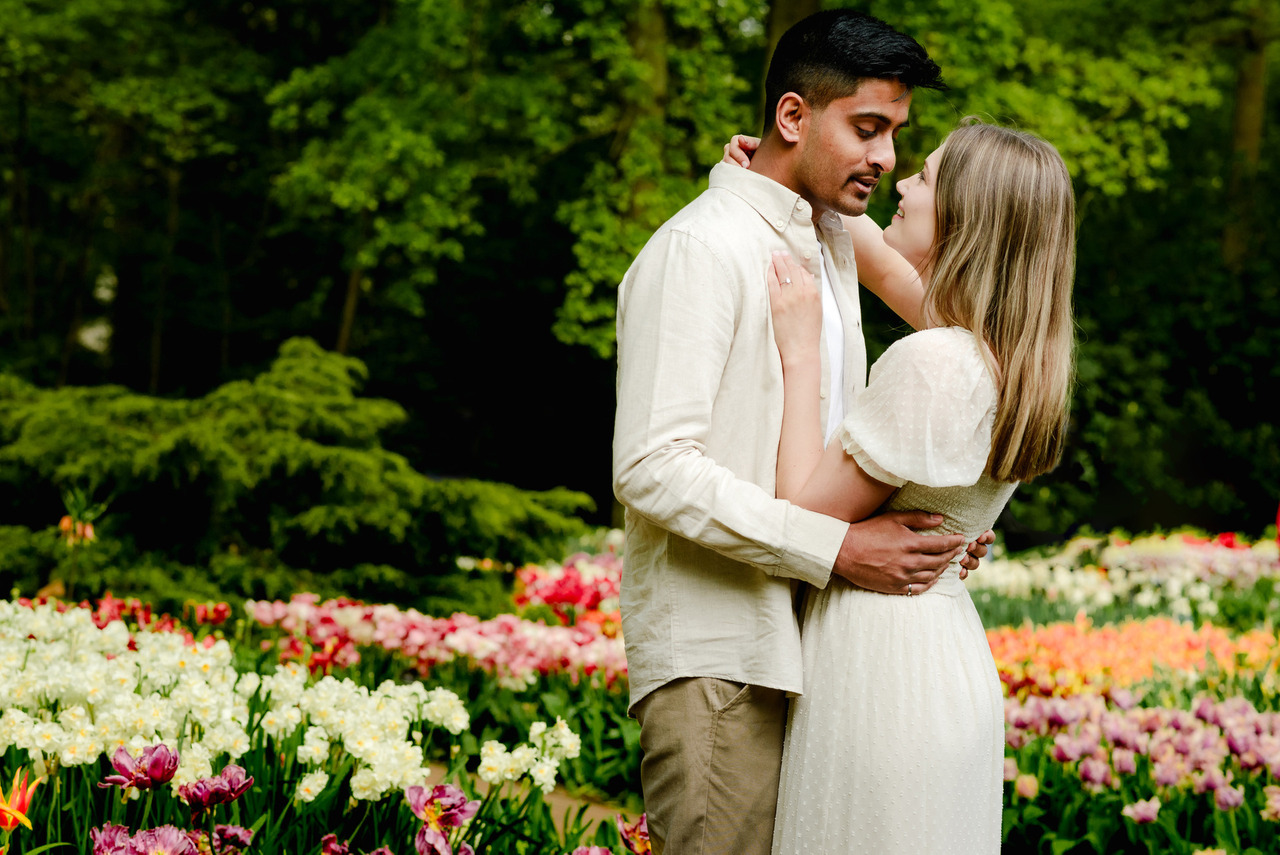
In addition to the pavilions, Keukenhof also features Inspirational Gardens. In 2024, for example, these included a Hilltop Heaven, Beach Garden, Mediterranean Garden, and a Love Garden.
If you visit on a weekend, you may want to spend more time enjoying special events and performances. For example:
- The first weekend of the season often features Dutch music celebrations around the Windmill.
- The second weekend coincides with the opening of Alkmaar's Cheese Market, bringing Dutch heritage events to the gardens, including cheese-related traditions.
For those who love photography, flower design, or simply strolling, it’s best to plan for a half-day visit to fully enjoy Keukenhof.
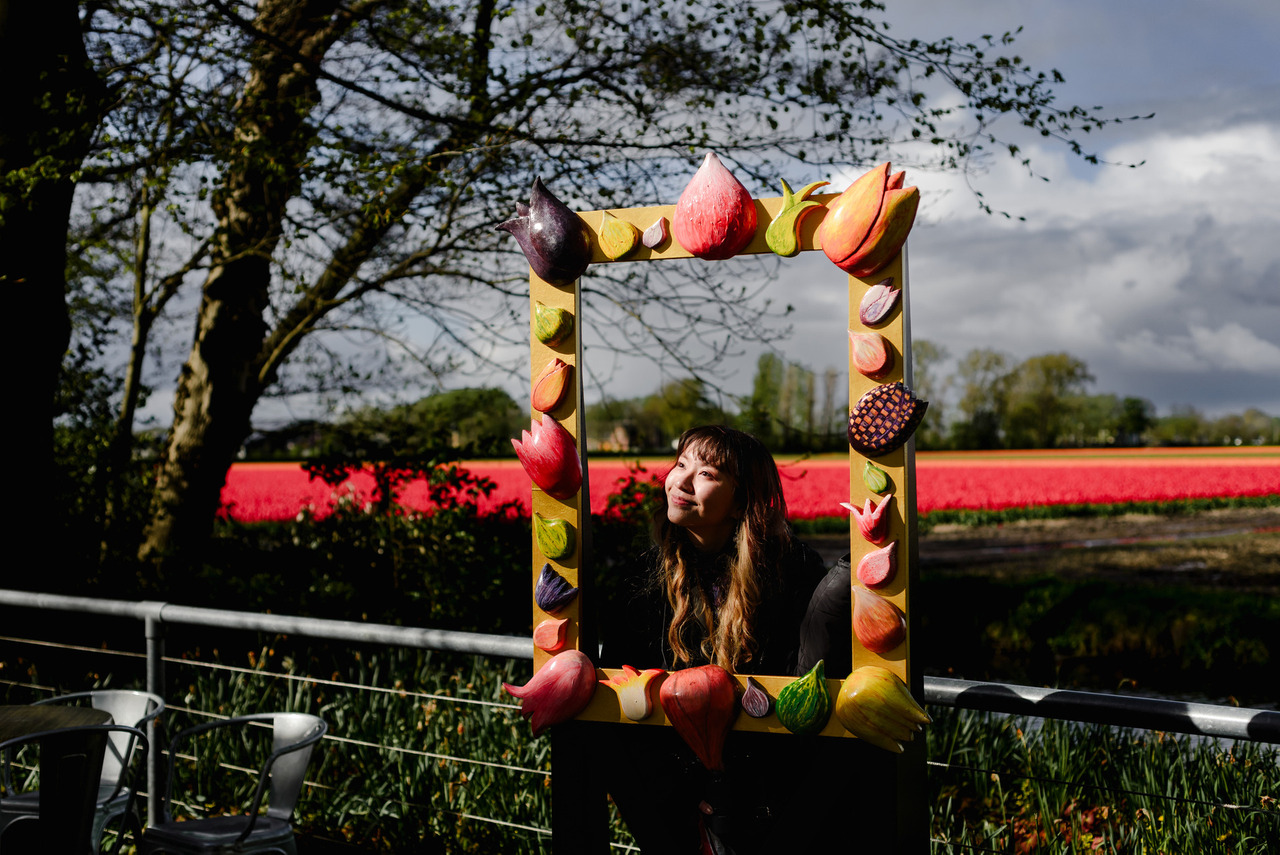
Ticket & Entry Information
Question 5: How much do tickets to Keukenhof cost?
Tickets for Keukenhof cost €20 per adult and €9 for children aged 4-17, while children under 4 years old can enter for free. There is also a Lentepass, which allows unlimited access to the gardens throughout the season. This pass costs €50 per adult and €17.50 per child. The Lentepass is a physical pass that can be delivered to your home in the Netherlands or picked up at the Keukenhof office, located next to the main entrance.
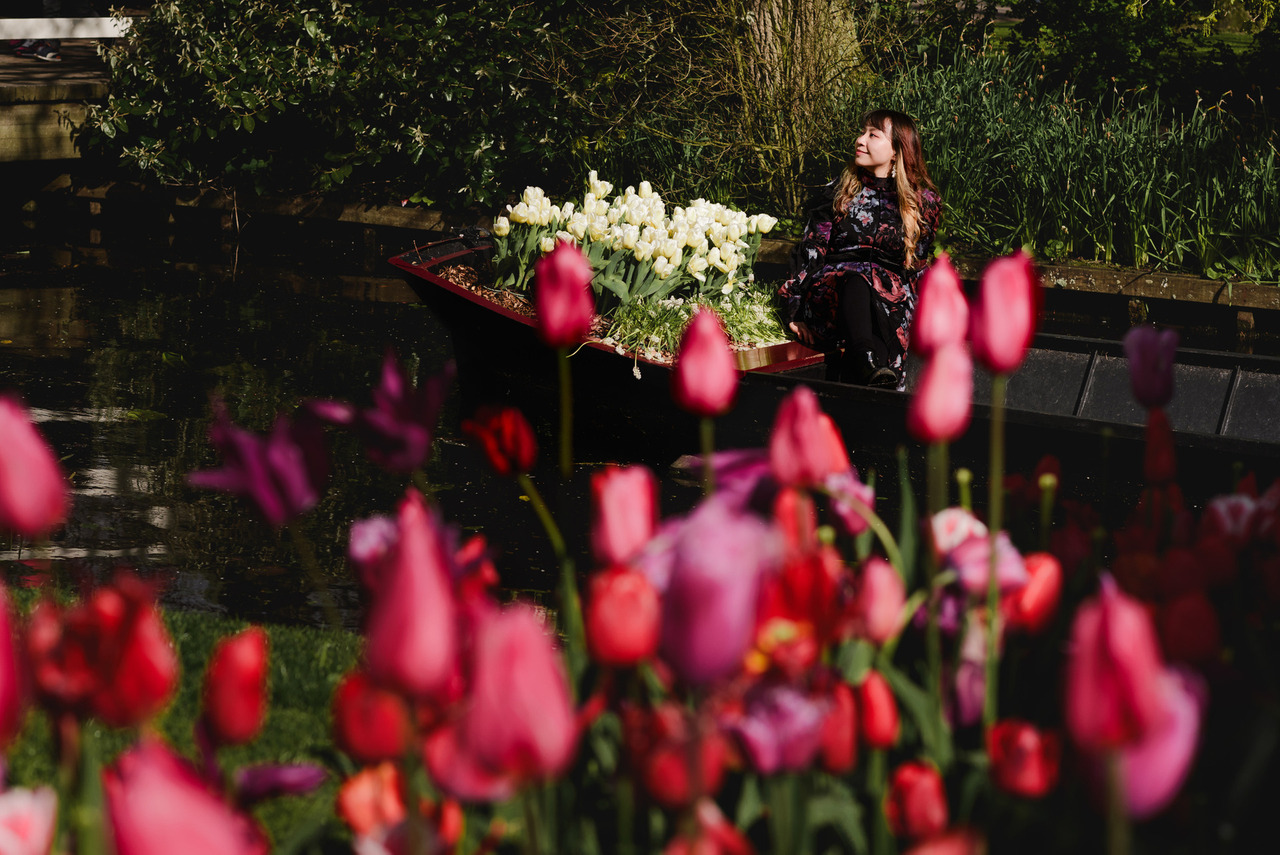
Question 6: Where can I buy tickets for Keukenhof?
The best place to purchase tickets is through the official Keukenhof website (tickets.keukenhof.nl), where you can also check live availability. Booking in advance is highly recommended, especially for weekends, as crowds can be significant. While Keukenhof tickets rarely sell out, the exception is Flower Parade Day, which in 2025 will be on Saturday, April 12th.
As of February 13th, March weekends are already filling up, and in April, high attendance is expected from Friday to Sunday. Additionally, Monday, April 21st, is already seeing high bookings, so planning ahead is essential.
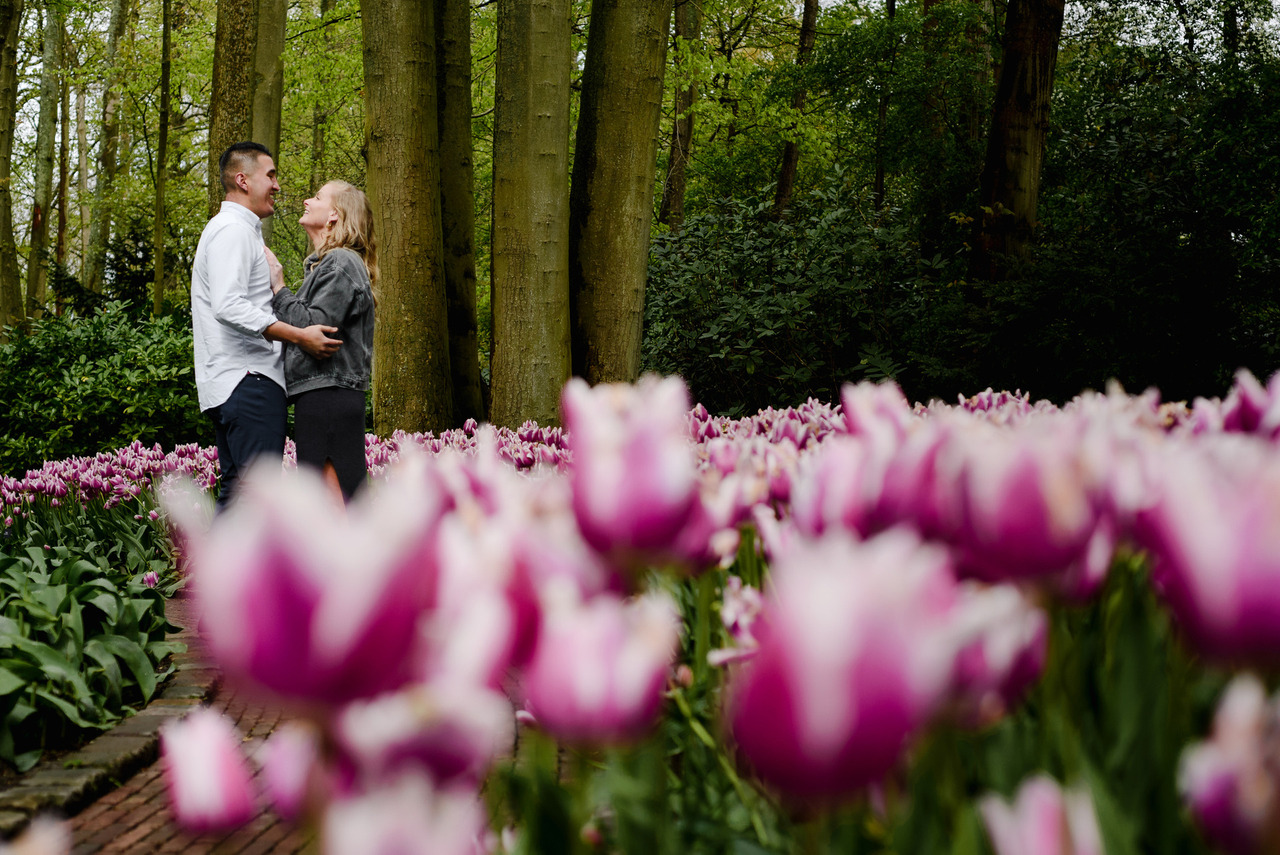
Question 7: Can I buy Keukenhof tickets at the entrance?
Yes, you can buy tickets at the entrance. There are automatic ticket machines and QR codes available at both entrances for on-the-spot purchases. Based on my experience, there is usually availability on weekdays, but weekends can get very crowded, so buying tickets in advance is recommended.
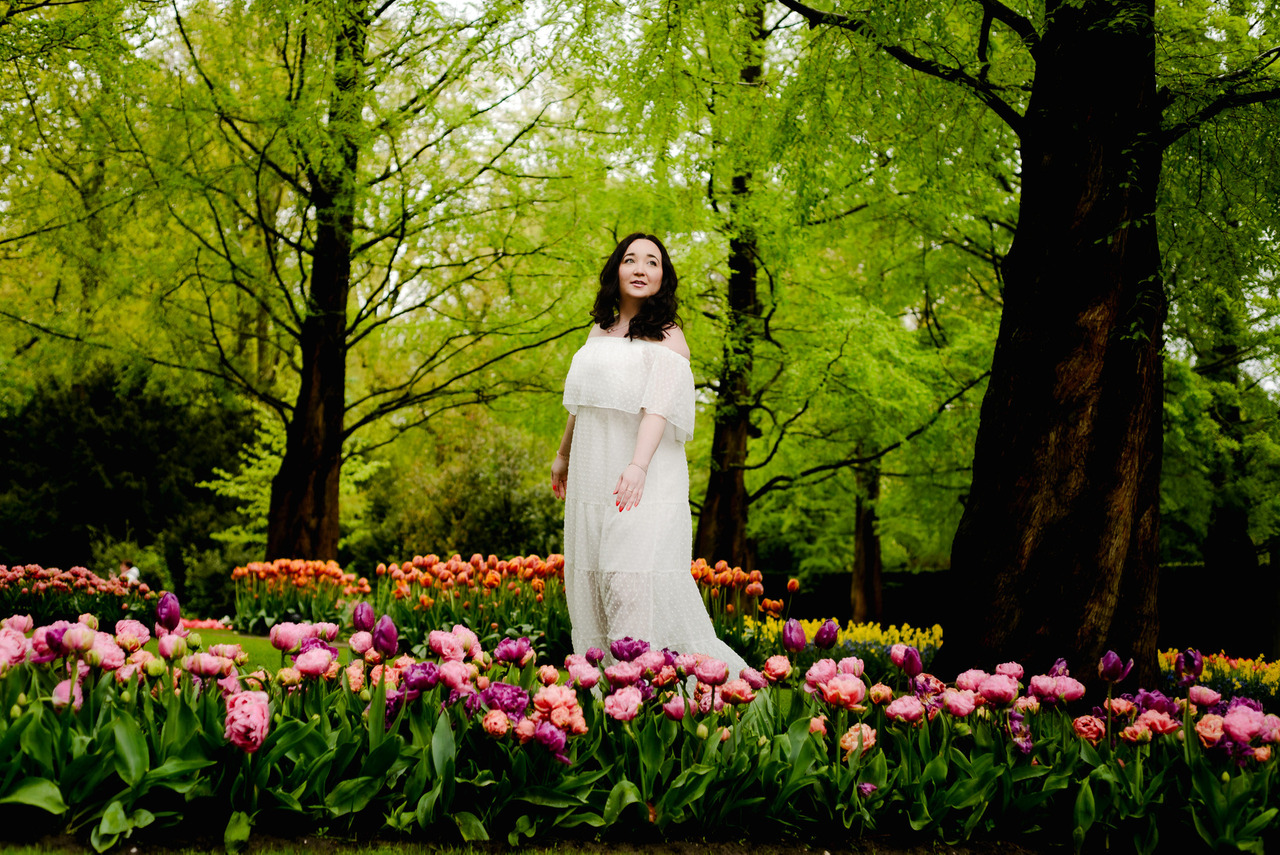
Question 8: Are there any discounts for Keukenhof tickets?
The only available discount is through combi-tickets, which include both entrance to Keukenhof and transportation. Choosing the right departure point is important, as it depends on where you are staying in Amsterdam. Here are the options:
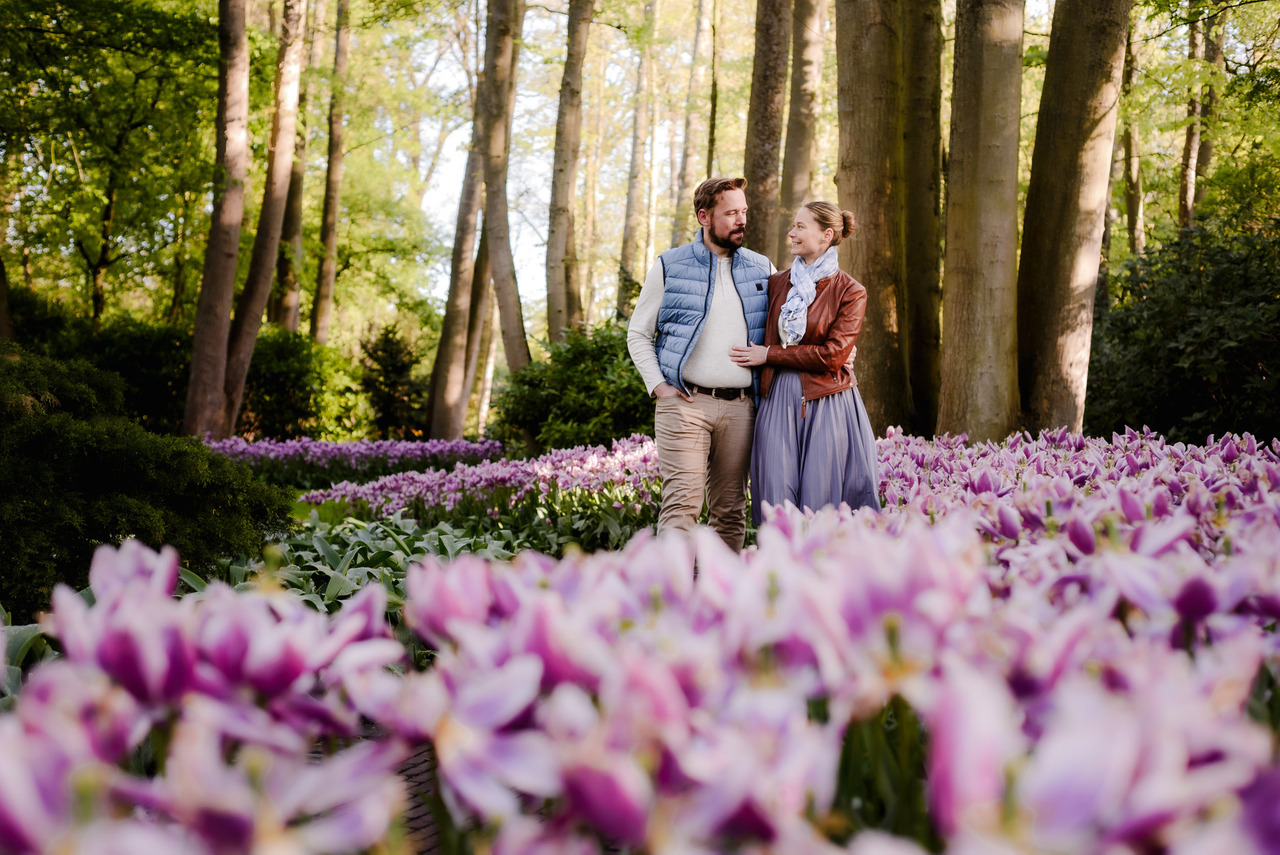
1. Departure from RAI – €37 (Total: €42.20)
- You need to first reach RAI Station.
- This is the last bus to arrive at Keukenhof in the morning (first ride at 7:30 AM) due to its longer route.
- Additional round-trip ticket from Amsterdam Central to RAI: €5.20.
- Total cost: €42.20.
2. Departure from Schiphol Airport – €32 (Total: €42.40)
- Requires reaching Schiphol Airport first.
- The bus stop is a 10-minute walk from the station, but the route is well-marked.
- Bonus sight: The I Amsterdam sign is right outside Schiphol Airport, so you can stop for a quick photo.
- Additional round-trip ticket from Amsterdam Central to Schiphol: €10.40.
- Total cost: €42.40.
3. Departure from Haarlem – €32 (Total: €42.40)
- Requires reaching Haarlem, but has two main advantages:
- Haarlem is closer to Keukenhof, making it the first bus to arrive at the gardens in the morning.
- The bus route passes through picturesque streets and neighborhoods.
- Walking distance from Haarlem Station to the bus stop is just a few minutes.
- Additional round-trip ticket from Amsterdam Central to Haarlem: €10.40.
- Total cost: €42.40.
Which Option is Best?
From my experience, departing from Haarlem has a great advantage. After your Keukenhof visit, you can spend the afternoon in Haarlem, making your trip more valuable and adding another charming Dutch city to your itinerary.
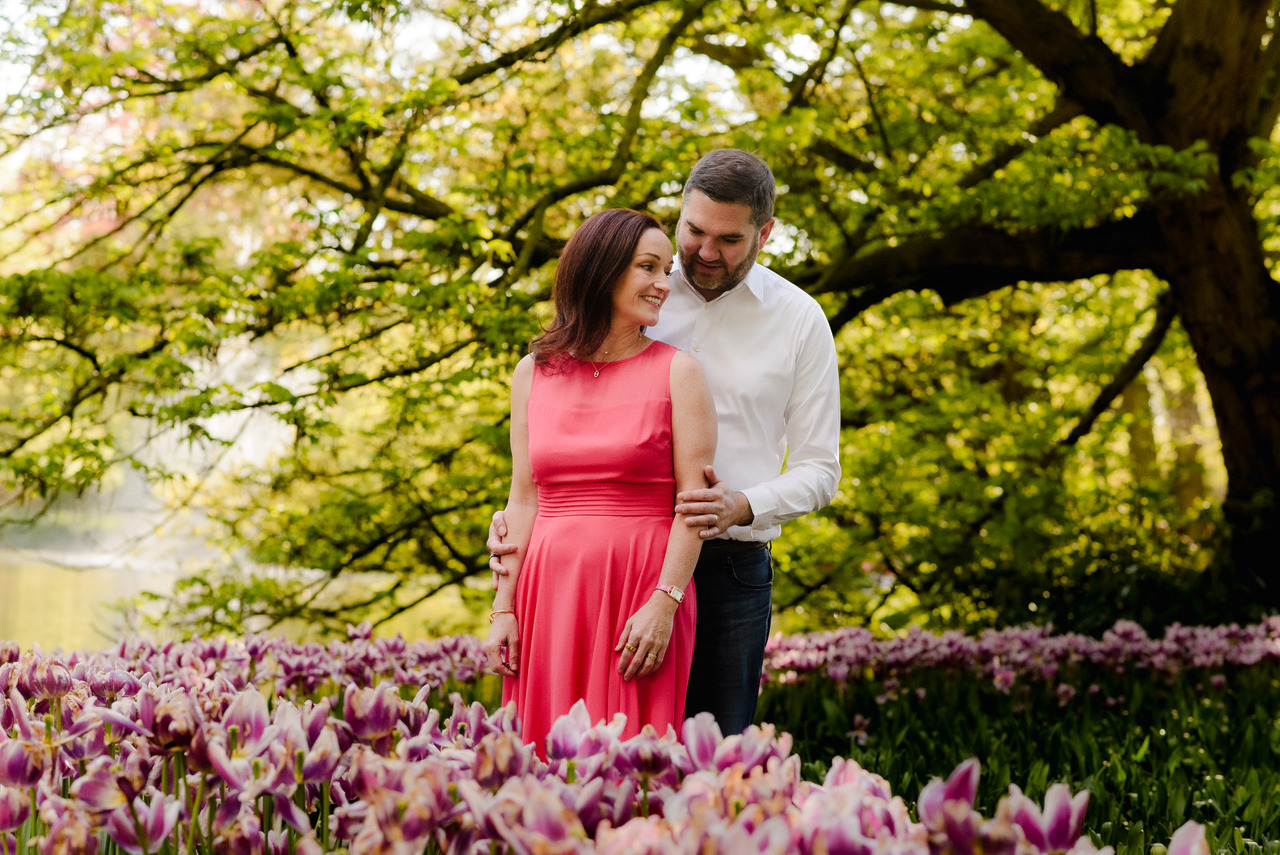
Visiting & Practical Tips
Question 9: What is the best time to visit Keukenhof?
Depends on what you want to see and your preference for crowds:
The Best Month to Visit is April. But of course the season can divided between early bloomers, peak tulip season and late bloomers:
- Late March to Early April → Best for early bloomers like daffodils and hyacinths. Tulips are just starting to bloom. You can also see magnolia and cherry blossom all around the gardens.
- Mid to Late April → Peak tulip season! This is when the gardens are at their most colorful.
- Early May → Late tulips are still in bloom, but some areas may start wilting as the season ends.
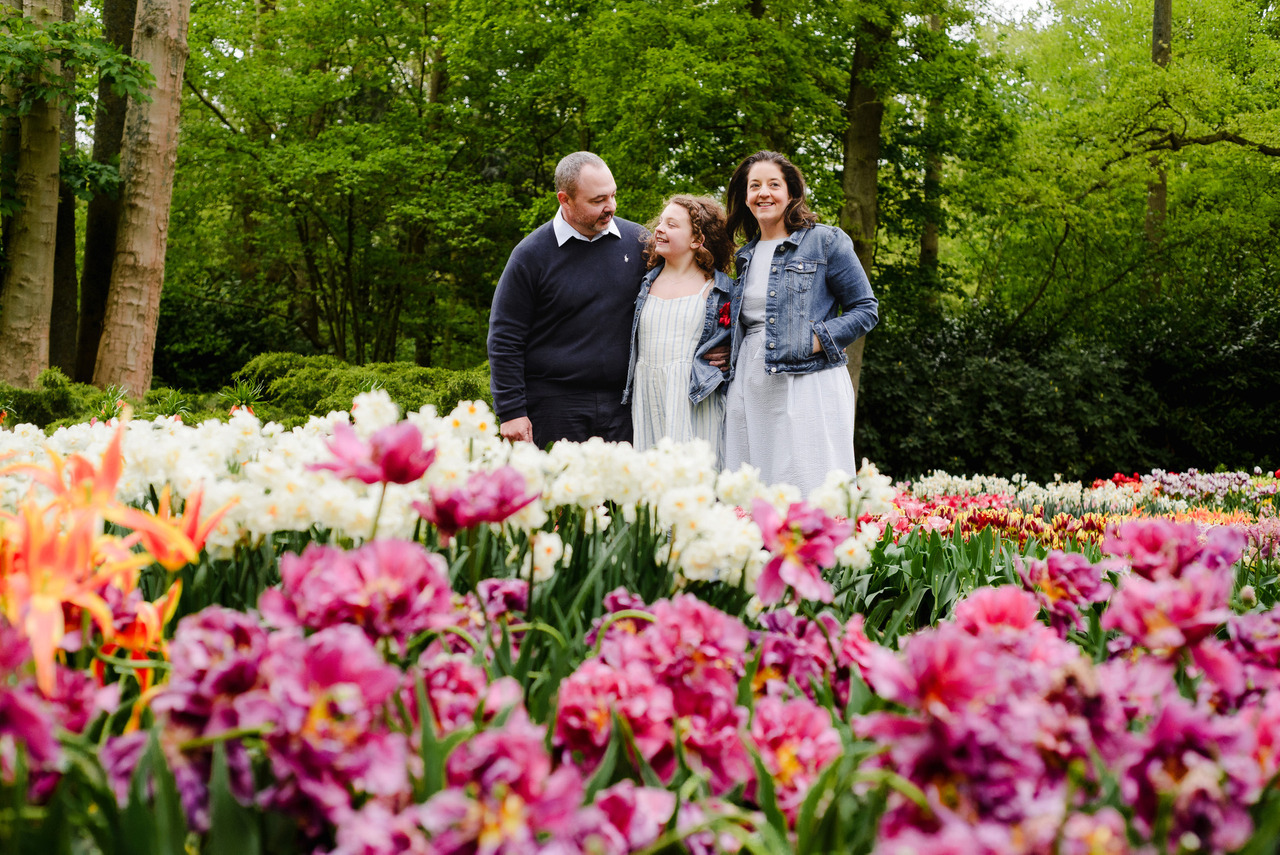
Best Days to Visit:
- Weekdays (Monday – Thursday) → Fewer visitors, more space for photos.
- Weekends (Friday – Sunday) → Very crowded, especially in April. Advance ticket booking is a must.
- Avoid Flower Parade Day (April 12, 2025) → This is the busiest day of the season.
Best Time of Day to Visit:
- Early morning (8:00 – 10:00 AM) → Fewer crowds, best light for photography.
- Late afternoon (4:00 – 7:00 PM) → Visitors start leaving, and the golden light makes the flowers even more beautiful.
If you’re looking for perfect photos with fewer people, the first and last hours of the day are ideal!
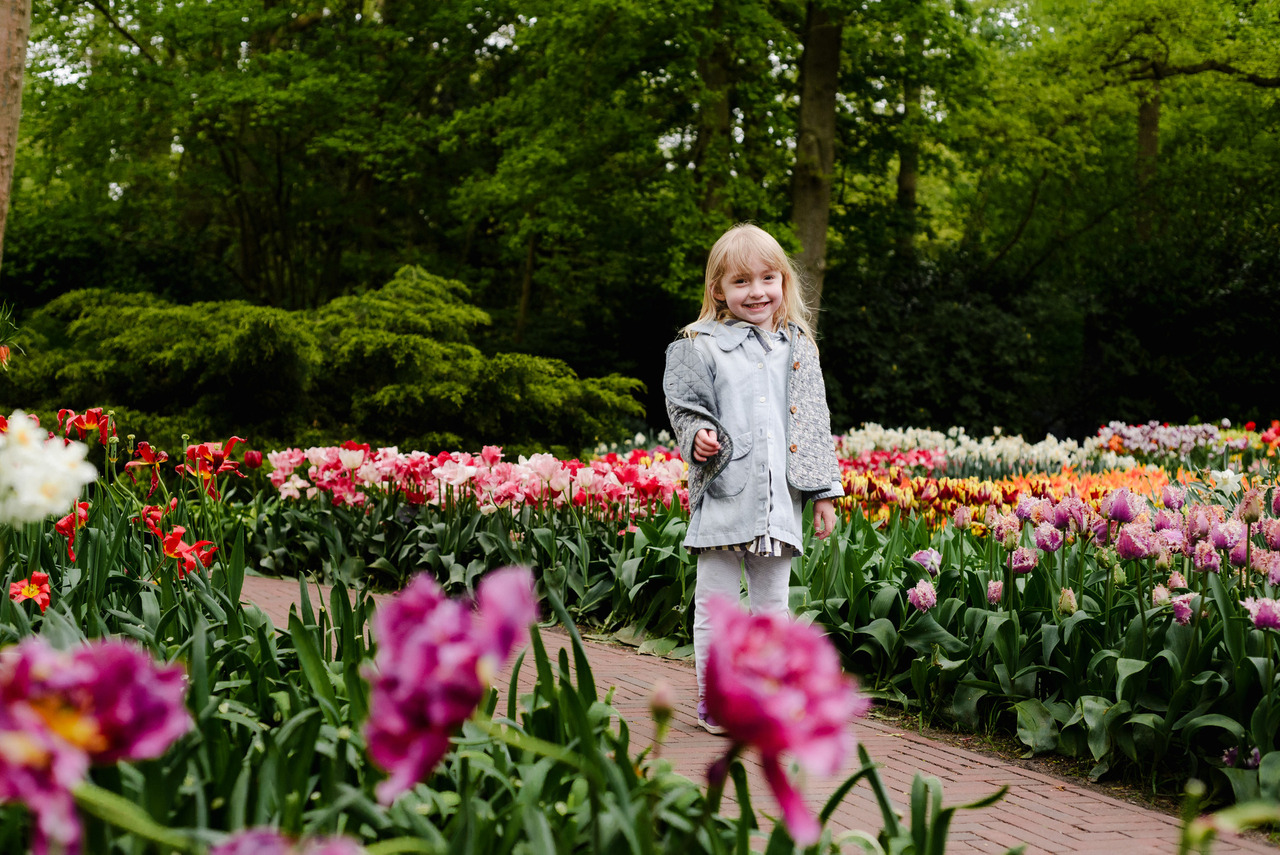
Question 10: What are the best photo spots in Keukenhof?
Keukenhof offers many beautiful photo spots, and I’ve included some examples in these pictures to show you the diversity of locations within the gardens. While there are plenty of stunning areas, I personally find the wooded area to be the most photogenic.
It’s important to note that Keukenhof is a landscaped garden, not a tulip field. Flowers are arranged in carefully designed displays, separated by concrete paths and protective fences to preserve them. However, in post-production, we ensure that any distracting elements are removed so you can have the most beautiful memories from your visit.
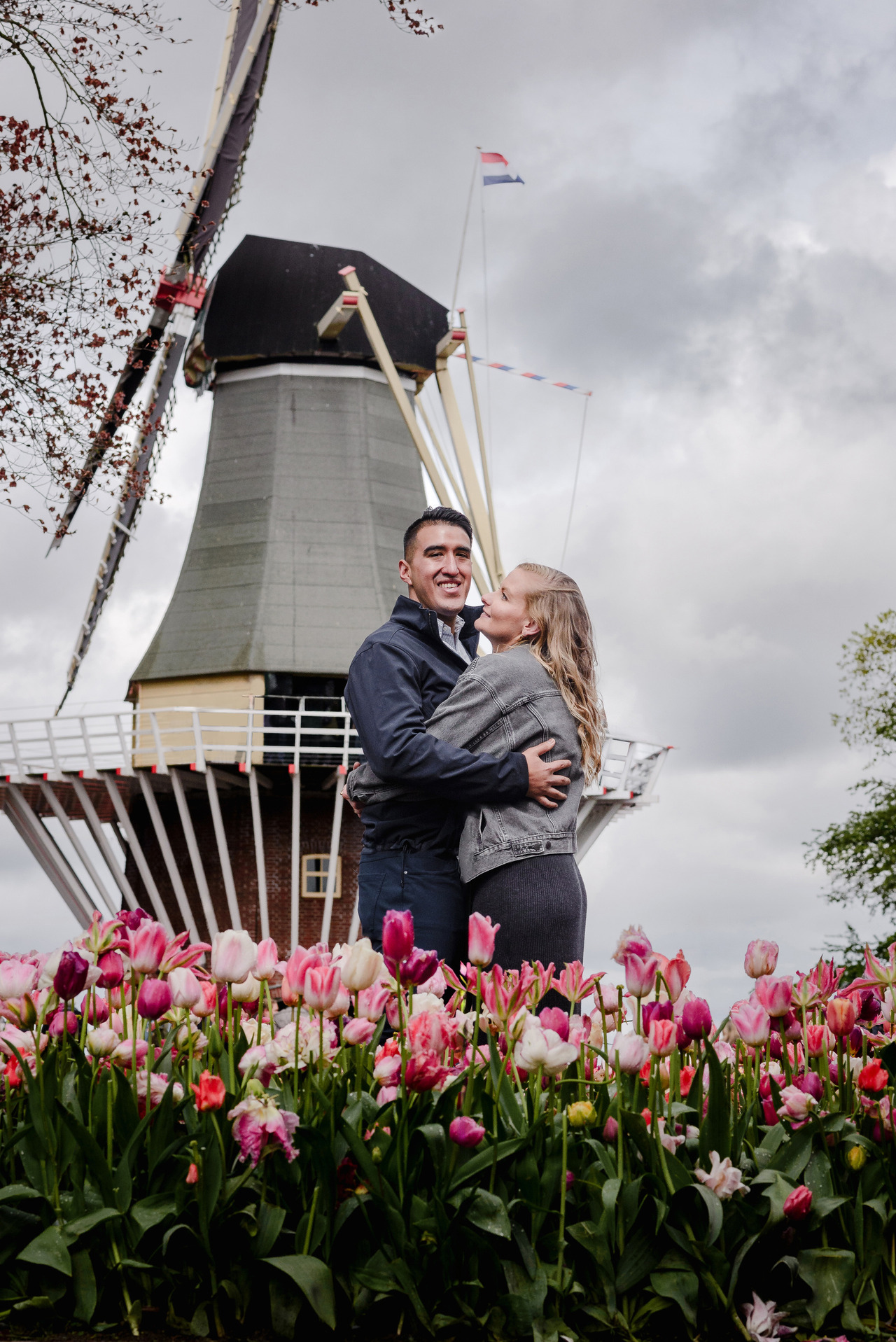
Question 11: Can I bring my own food to Keukenhof?
Yes, you can! Keukenhof allows visitors to bring their own food and drinks, and there are plenty of outdoor spaces where you can sit and enjoy a picnic surrounded by flowers. You’ll find benches, grassy areas, and even designated picnic spots throughout the gardens.
However, if you prefer to buy food inside Keukenhof, there are several cafés, food stalls, and restaurants offering a variety of options, including Dutch specialties, sandwiches, snacks, and warm drinks. This can be a great alternative if you don’t want to carry food with you or simply want to try something local.
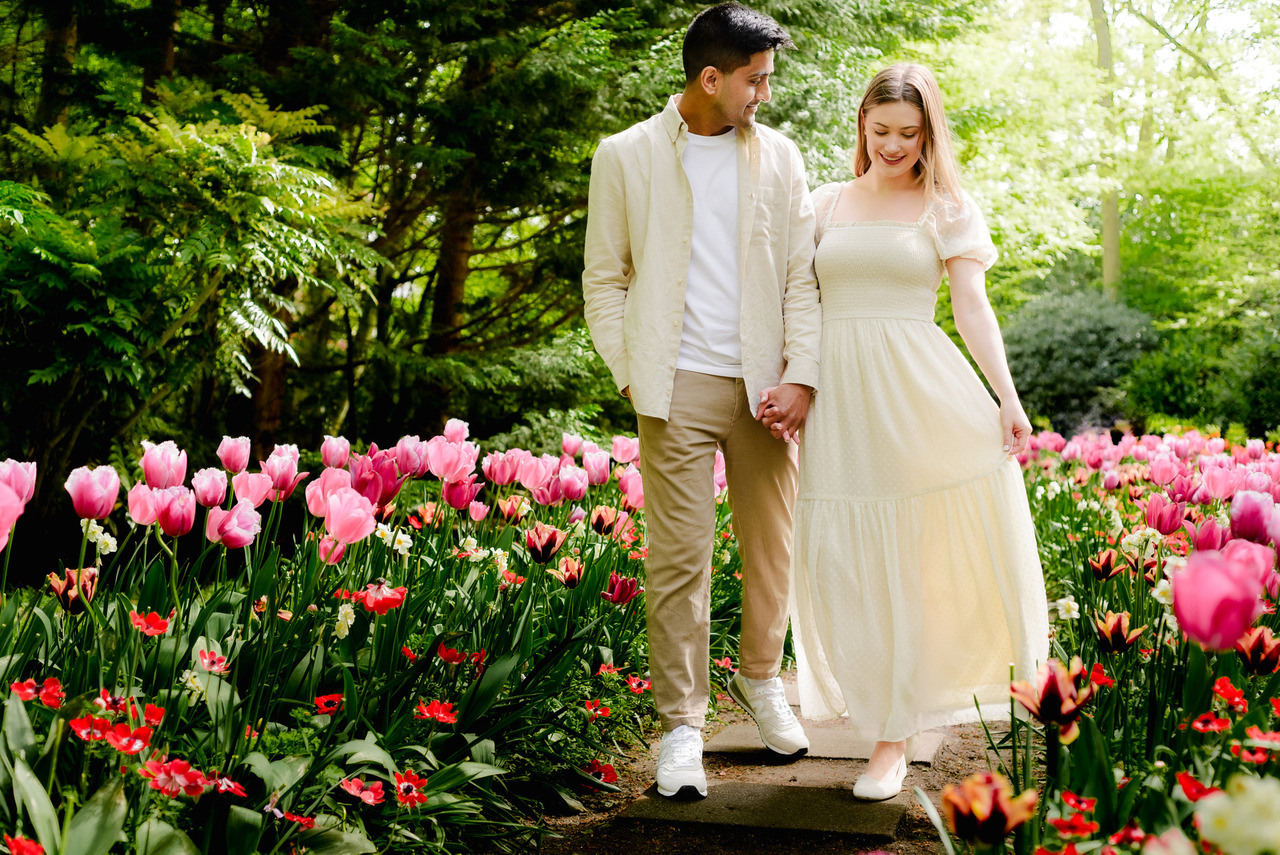
Tulips & Flowers
Question 12: What types of flowers can I see at Keukenhof?
Keukenhof is home to over 7 million flowers, featuring a breathtaking variety of spring blooms. While tulips are the main attraction, the gardens also showcase many other stunning flowers. Here are some of the most common types you’ll see:
Tulips – The star of the show! Keukenhof features over 800 varieties of tulips in every color imaginable.
Daffodils – One of the first flowers to bloom in spring, adding bright yellow and white tones to the landscape.
Hyacinths – Known for their strong, sweet fragrance, hyacinths come in shades of blue, purple, pink, and white.
Crocuses – These early bloomers create beautiful purple, yellow, and white carpets at the beginning of the season.
Fritillarias – Unique, bell-shaped flowers in bold colors like deep red and orange.
Roses & Orchids – Found in the Beatrix Pavilion, where exotic orchids and elegant roses are displayed in stunning arrangements.
Lilies & Irises – Featured later in the season, bringing bright and delicate touches to the garden beds.
Keukenhof also has Inspirational Gardens, where you’ll find creative floral designs, themed displays, and rare flower varieties each year. No matter when you visit, you’ll be surrounded by a spectacular mix of colors and fragrances.
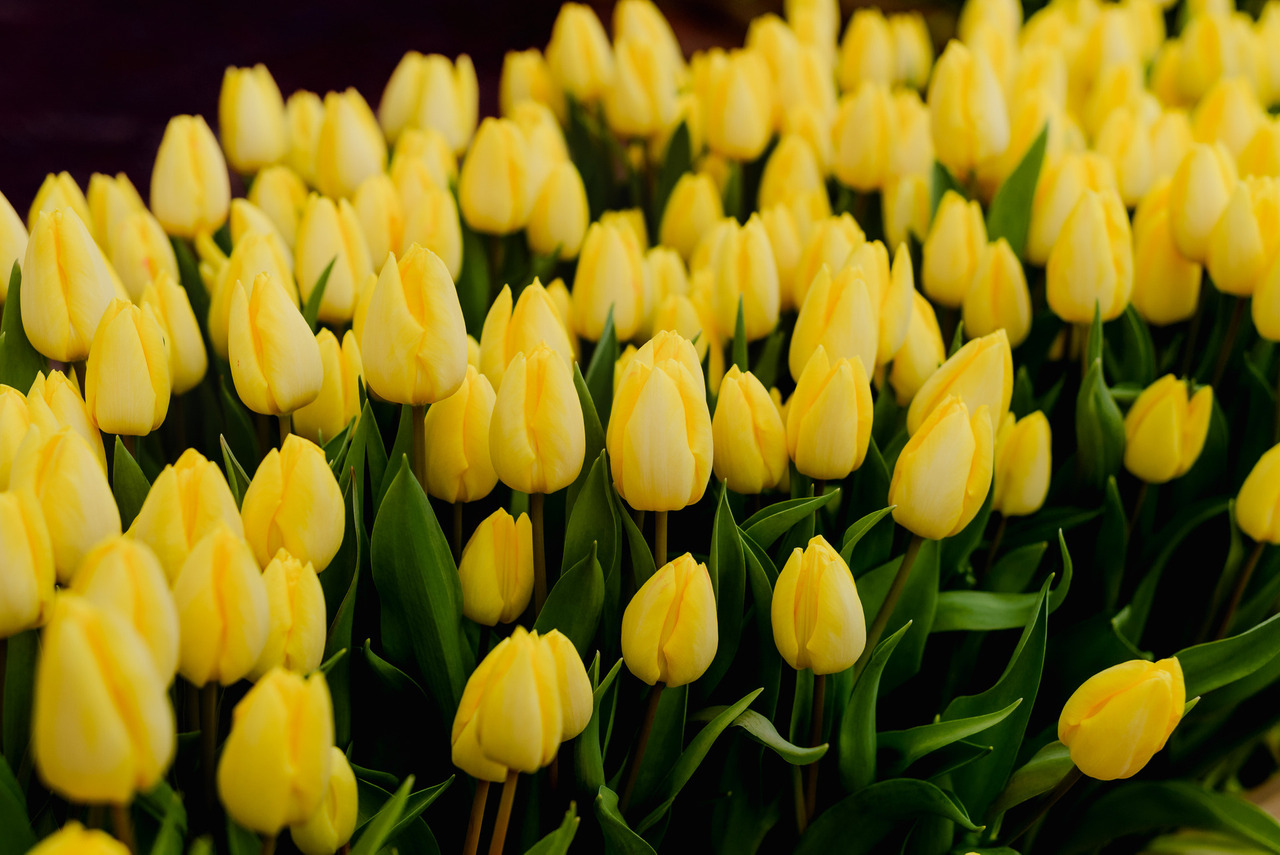
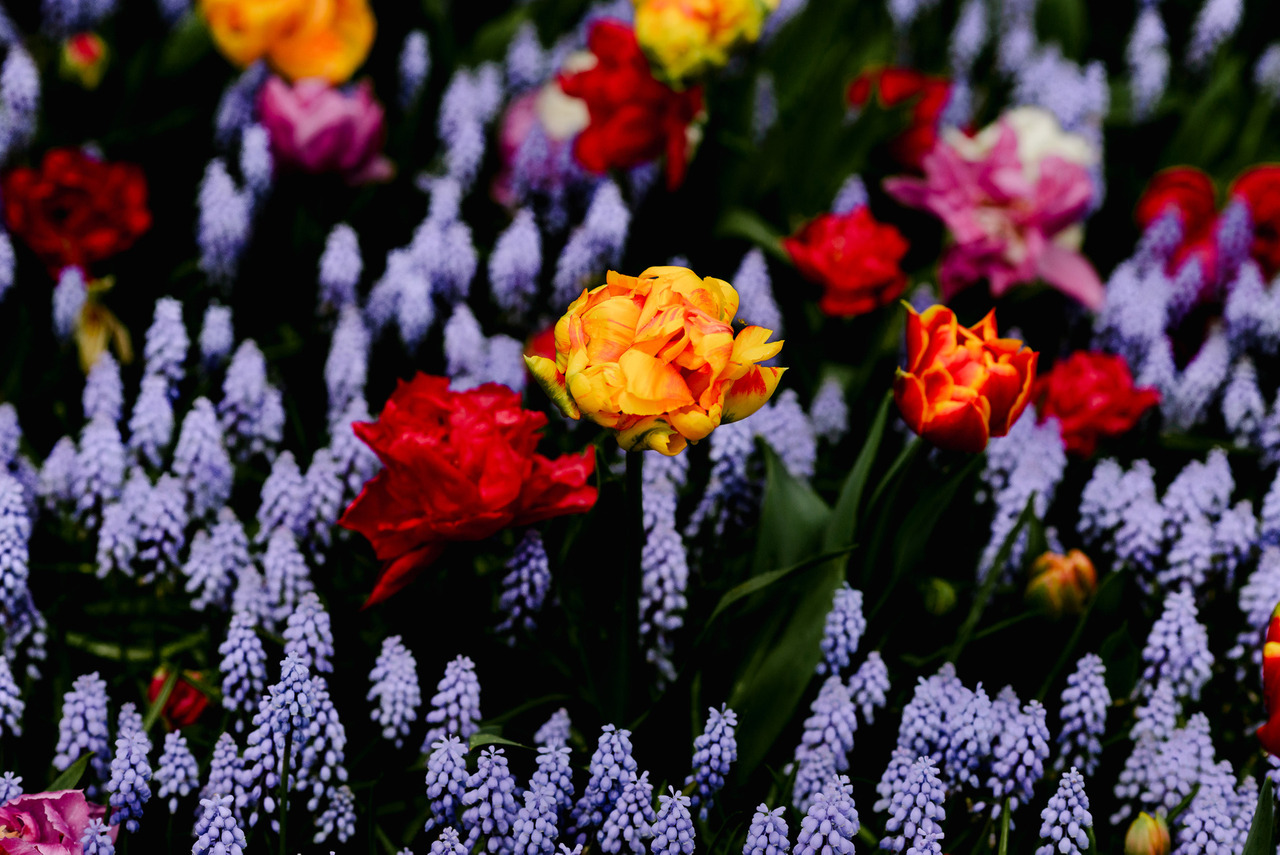
Question 13: How many tulips are planted in Keukenhof each year?
Each year, Keukenhof plants around 7 million flower bulbs, with over 4.5 million of them being tulips. These tulips come in more than 800 varieties, ranging from classic reds and yellows to rare and exotic multicolored hybrids.
How Are the Tulips Planted?
The planting process starts in autumn, with gardeners carefully designing the flower beds to ensure a stunning display throughout the season. Tulips are planted in layers so that different varieties bloom at different times, keeping the gardens vibrant from March to May.
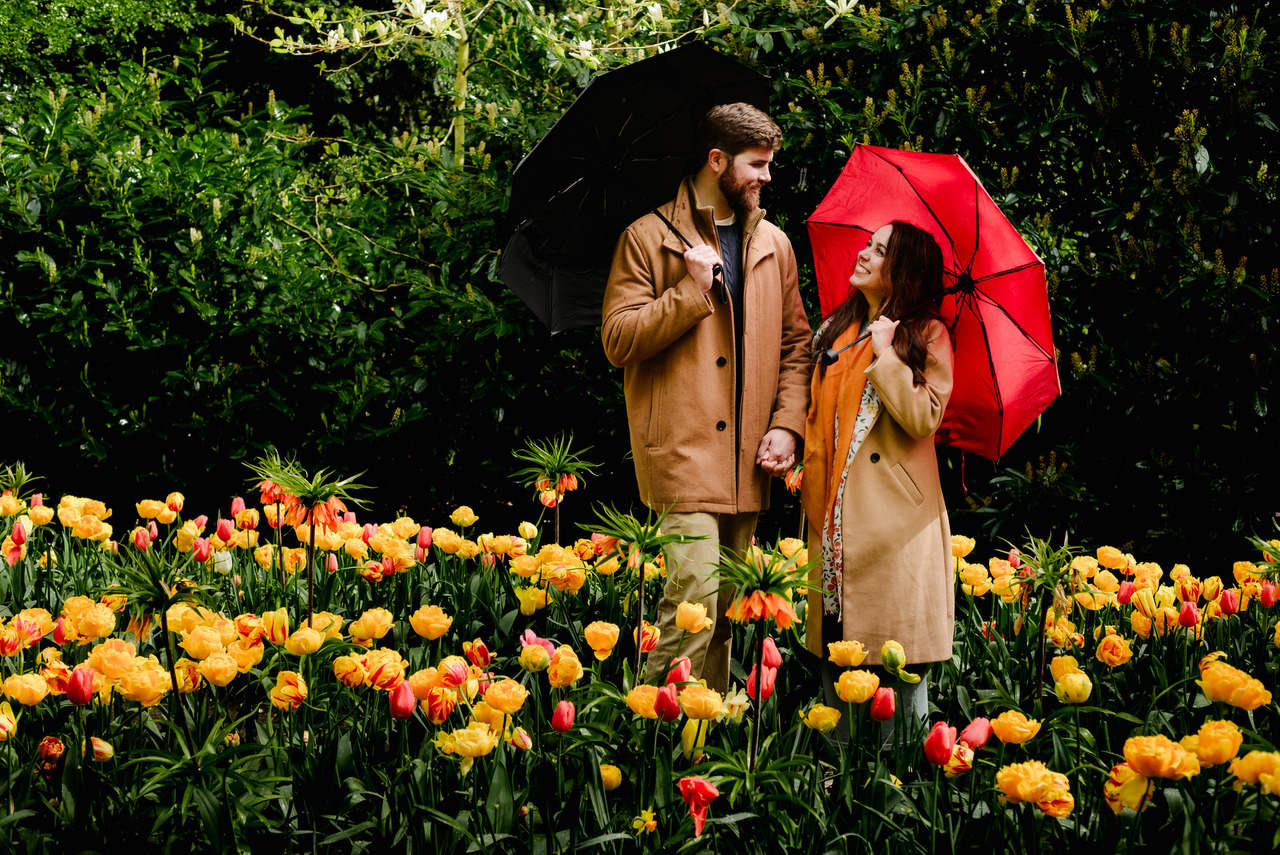
Where Can You Find the Most Unique Tulips?
While classic tulips are found throughout the gardens, some areas showcase rare varieties:
- Showcase Garden (near the main entrance) – This area highlights classic and rare varieties at the start of your visit.
- Oranje Nassau Pavilion – Just outside this pavilion, you’ll find mixed tulip varieties paired with peonies, which are among my personal favorites.
- Around the Lake (opposite the entrance) – A peaceful area featuring beautiful tulip varieties.
- Near the Small Windmill – Look closely at the mix gardens around the windmill (the small one, not the big one), where some of the most photogenic flower varieties are planted.
Rare & Exotic Tulip Varieties You’ll See
Here are some of the most unique tulips found in Keukenhof:
- "Black Parrot" – A dramatic tulip with deep purple, almost black petals and a fringed, ruffled look.
- "Ice Cream" – One of the most unusual tulips. It looks like a scoop of vanilla ice cream sitting on pink petals.
- "Green Wave" – A striking tulip with green and pink wavy petals, giving it a tropical appearance.
- "Queensland" – A fringed tulip with ruffled pink petals and a white edge, resembling a peony.
- "Rembrandt Tulips" – A historic variety with streaks and stripes of different colors, originally caused by a virus in the 17th century but now carefully bred for its unique patterns.
For even more specialty tulips, I highly recommend visiting the Willem-Alexander Pavilion, which features a wide range of unique tulips and other spring bulbs.
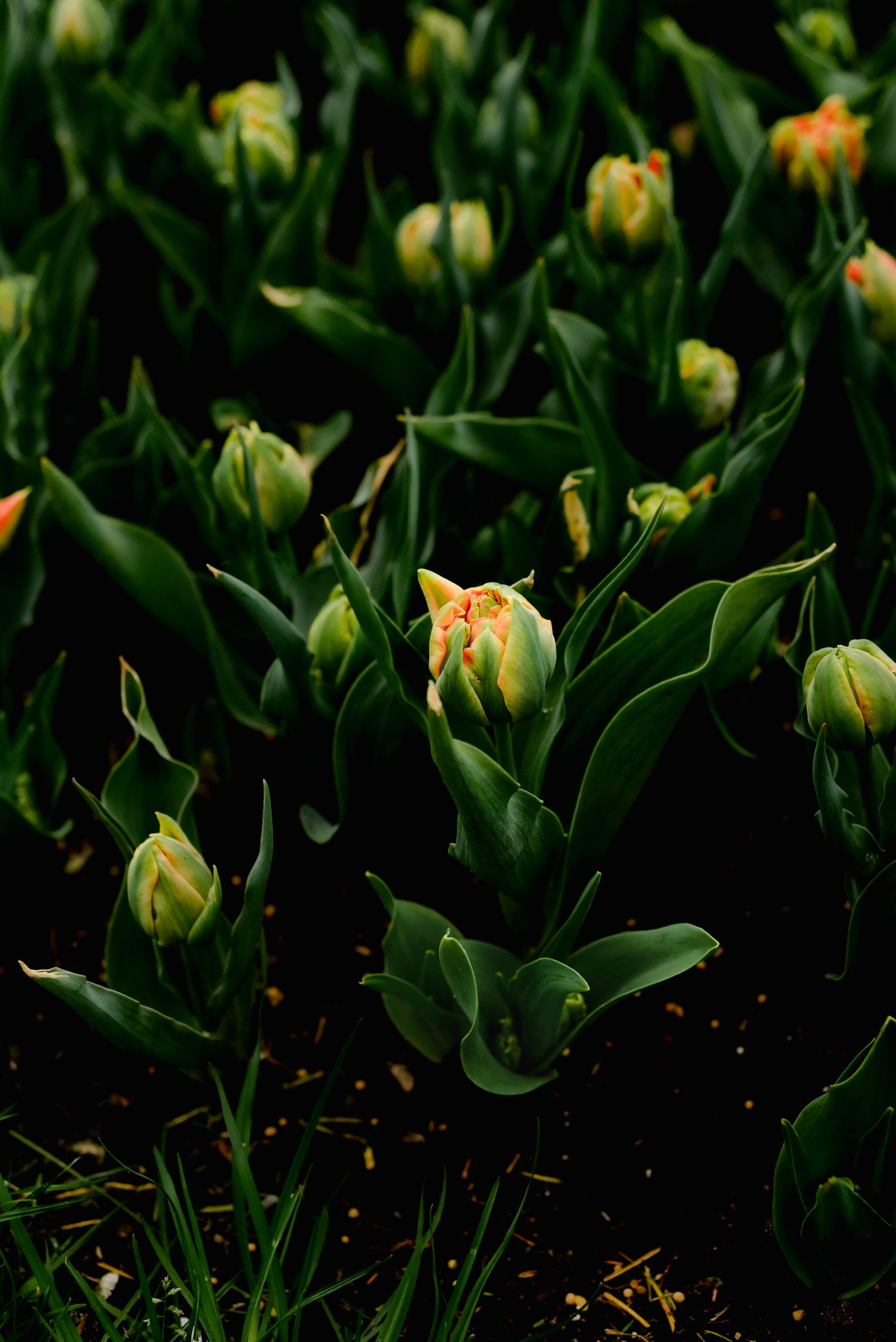
Question 14: Can I see tulip fields outside Keukenhof?
Yes! The area surrounding Keukenhof is filled with stunning tulip fields, offering breathtaking views of endless rows of colorful flowers. While Keukenhof itself is a landscaped garden, the real tulip fields are found in the Bollenstreek (Bulb Region), which stretches between Lisse, Noordwijk, and Hillegom.
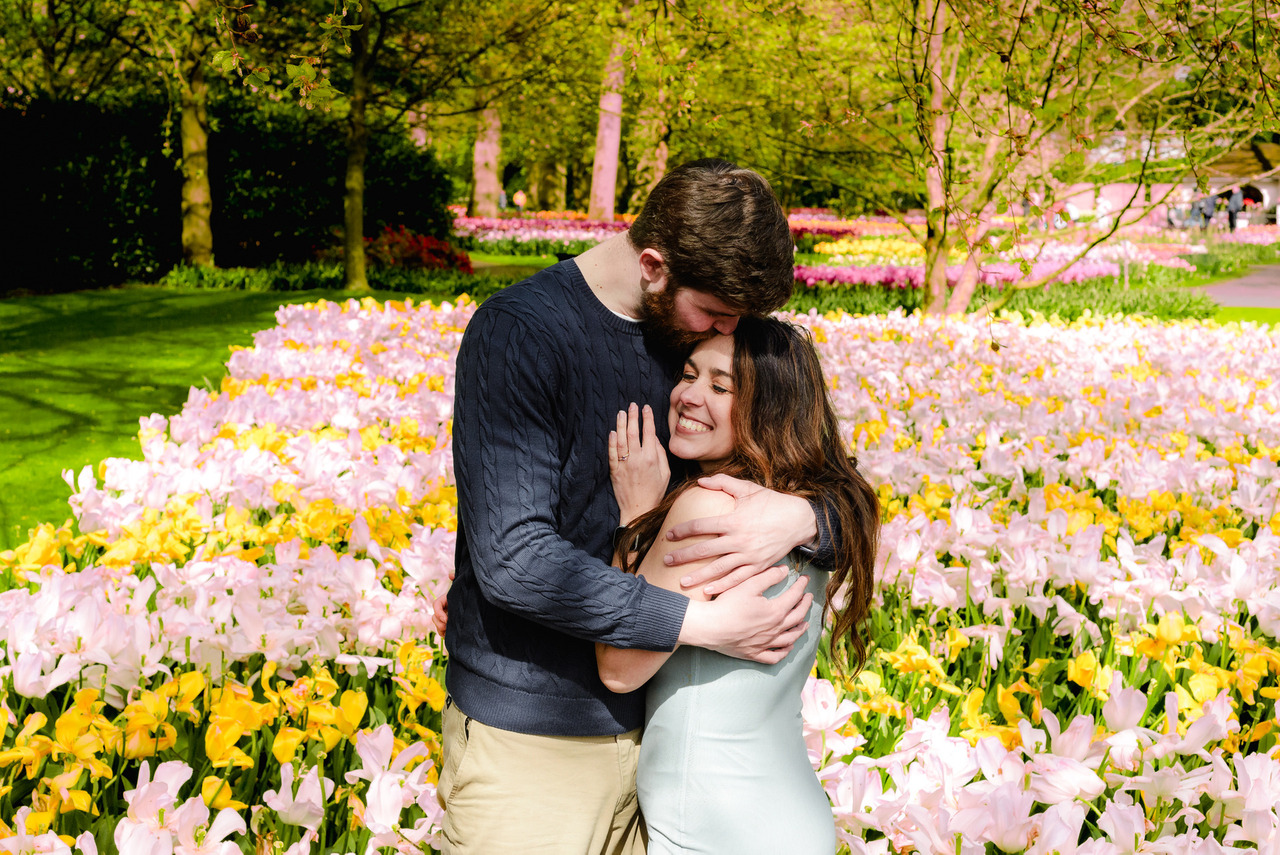
See Tulip Fields from the Water
One of the easiest ways to get a close look at the fields is by taking the whisper boat tour inside Keukenhof (€10). These electric boats glide silently through the waterways, offering a peaceful and unique perspective of the fields. The boat ride lasts about 45 minutes, and since the boats are open-air, you’ll have an unobstructed view of the flowers.
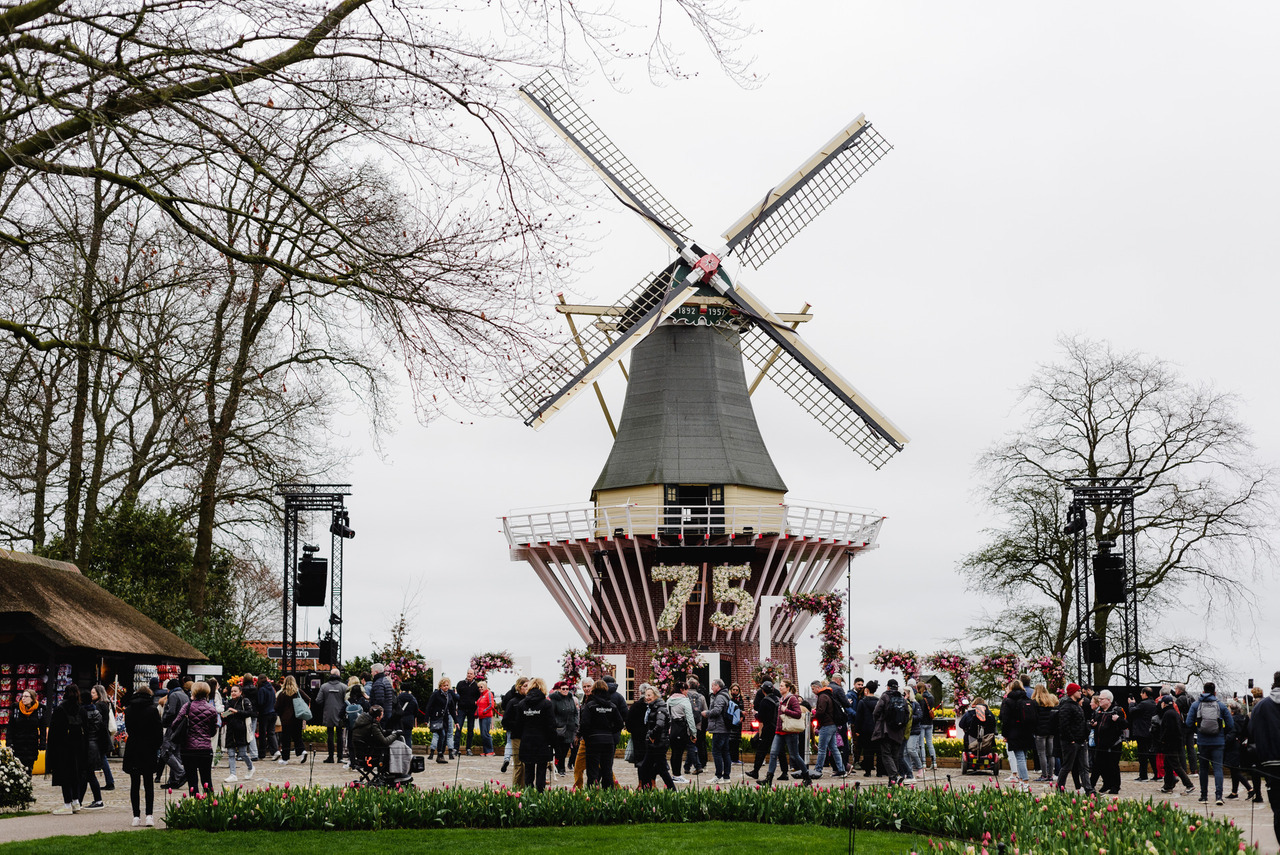
Explore Tulip Fields by Bike
For a more adventurous and immersive experience, you can rent a bike and cycle through the tulip fields. There are multiple bike rental shops right outside Keukenhof, and several marked cycling routes take you through the best tulip fields in the region. If you rent your bike right outside Keukenhof you will receive a map with several routes, but you can also follow the signs that will show your different route colours to follow. The Green route will take you to De Zilk and Hillegom, while the Purple route will take you to Voorhout.
Important Tip: The tulip fields are private property, so always be respectful and never walk into the fields unless there is a designated visitor area. The general recommendation is to stay at least 2 meters away from the flowers to prevent soil contamination from our shoes.
It’s important to remember that tulip growers make their business from selling bulbs, not the flowers themselves. Since these bulbs are exported, the soil is regularly tested for contamination, making it essential to keep the fields clean and undisturbed.
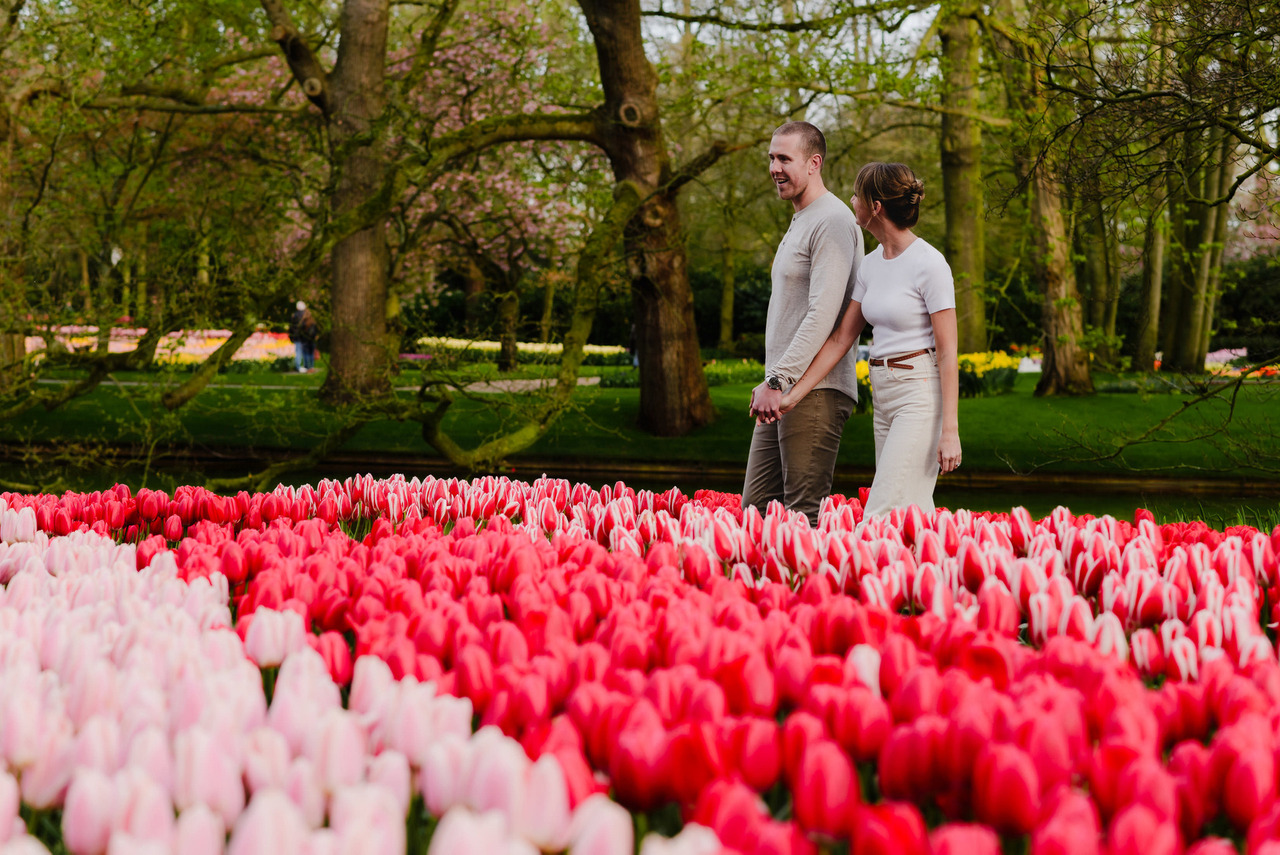
Question 15: What happens to the tulips after Keukenhof closes?
Once Keukenhof closes in mid-May, the tulips and other flowers are not harvested for bouquets. Instead, they are cut and removed to allow the bulbs to grow stronger for the next season.
By late June or early July, the tulip bulbs are carefully removed from the soil, cleaned, and sorted. The strongest bulbs are stored and prepared for the next planting season, while smaller or weaker bulbs might be sold.
Finally, in autumn (October - December), Keukenhof’s gardeners replant 7 million bulbs for the next year’s display, designing new floral themes and layouts.
It's important to know each year Keukenhof uses completely new bulbs, meaning the gardens never look the same twice.
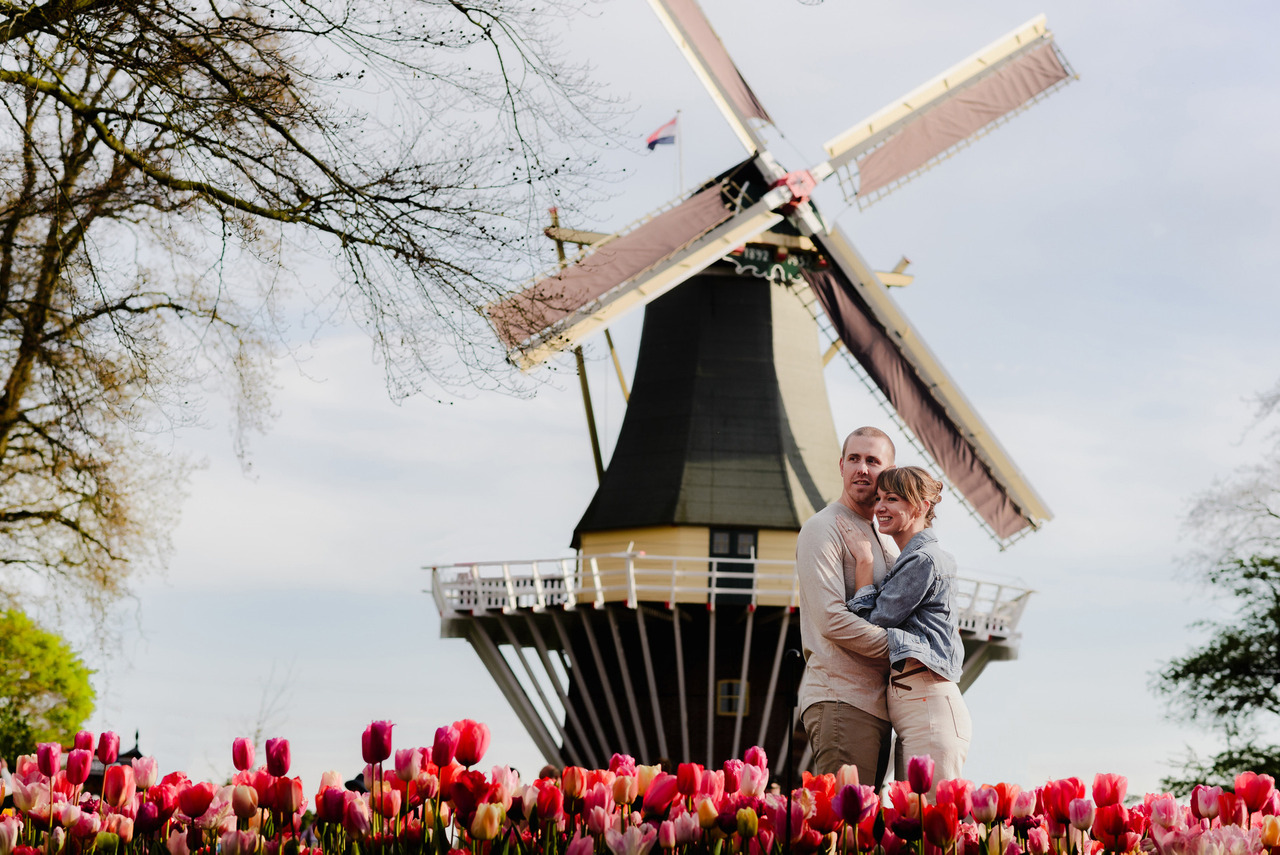
Do you have any more questions about Keukenhof Gardens? I’m happy to help make your visit as smooth and enjoyable as possible! And don’t forget—our Explorer and Lifestyle Routes offer a great way to experience both Amsterdam and Keukenhof, making your trip even more memorable.
See you soon and until the next photo session in Amsterdam.
Joanna, your Amsterdam photographer
Vacation photographer and local expert based in Amsterdam



